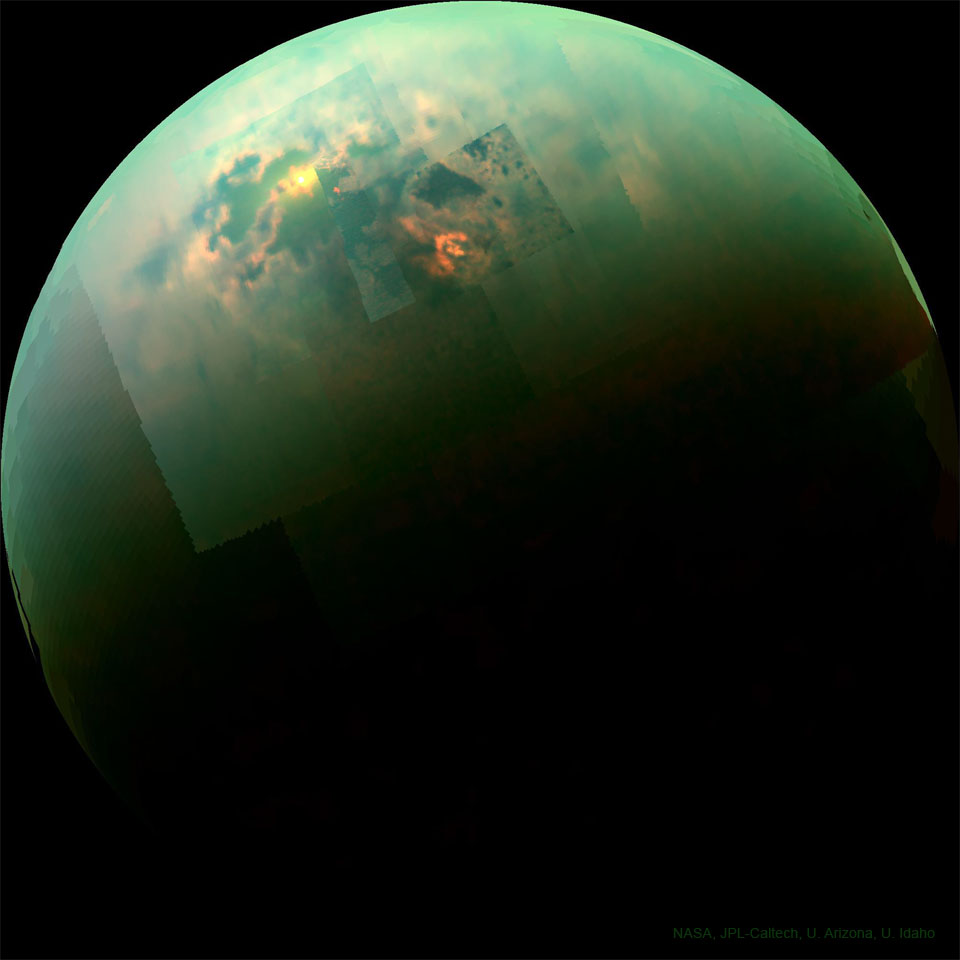2022年3月27日
Titan Seas Reflect Sunlight
Image Credit: NASA, JPL-Caltech, U. Arizona, U. Idaho
Explanation: Why would the surface of Titan light up with a blinding flash? The reason: a sunglint from liquid seas. Saturn’s moon Titan has numerous smooth lakes of methane that, when the angle is right, reflect sunlight as if they were mirrors. Pictured here in false-color, the robotic Cassini spacecraft that orbited Saturn from 2004 to 2017 imaged the cloud-covered Titan in 2014 in different bands of cloud-piercing infrared light. This specular reflection was so bright it saturated one of Cassini’s infrared cameras. Although the sunglint was annoying — it was also useful. The reflecting regions confirm that northern Titan houses a wide and complex array of seas with a geometry that indicates periods of significant evaporation. During its numerous passes of our Solar System’s most mysterious moon, Cassini has revealed Titan to be a world with active weather — including times when it rains a liquefied version of natural gas.
Tomorrow’s picture: stars of the south
土卫六甲烷海反射的阳光
影像提供: NASA, JPL-Caltech, U. Arizona, U. Idaho
说明: 为何土卫六表面到处都是炫目的亮光?理由:液体海在反射阳光。土卫六有数量众多的平滑甲烷湖泊,所以当角度合宜时,就会如镜子一般反射阳光。这幅由2004年到2017年之间绕行土星的卡西尼号太空船所拍摄的假色影像,呈现了2014年在数个云层透视红外光波段所拍摄的云笼土卫六。由于湖面反射的阳光过于明亮,还造成卡西尼号一部红外相机饱合。虽然阳光会形成干扰,不过也有其他好处。反射区的几何形状显示,土卫六北部成群的辽阔海子在某些时期会发生明显的蒸发。在难以数计飞越我们太阳系最神密卫星的期间,卡西尼号证实土卫六有活跃的天气,包括会降下液态天然气雨。
明日的图片: stars of the south



